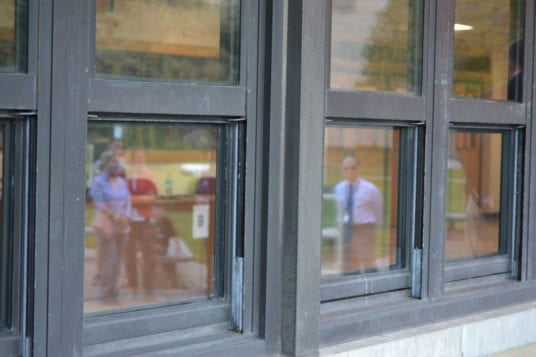Brookhaven Town plans to spend $294.1 million in the 2018 fiscal year, about a $12 million increase compared to 2017’s budget, though the town won’t need much help from the public to do so.
Supervisor Ed Romaine (R) presented his tentative operating budget for 2018 to the public during a meeting Sept. 28. Romaine referred to the plan as a “taxpayers’ budget.”
“My job is to bring in the most cost effective budget, and that’s what we think we’ve done here,” Romaine said, thanking the town’s finance department Commissioner Tamara Wright and Chief of Operations Matt Miner for their work in presenting a balanced budget. He also lauded the town’s AAA bond rating as a valuable asset in putting together a spending plan.
“We have a structurally balanced budget for the last few years and we have wound up each of the last few years with a surplus, which kind of distinguishes us in terms of our fiscal soundness,” Romaine said.
The increase compared to the 2017 fiscal year can be attributed in large part to the disbanding of the formerly incorporated Mastic Beach Village, which means some services provided to residents of the village will again become Brookhaven’s responsibility. In addition, health insurance costs for town employees are expected to increase by 10 percent in 2018, and contractually mandated raises will go up by about $1.7 million. The town’s debt requirements will be about 5 percent higher in 2018. Despite the increases, if passed, the spending plan would maintain all services provided to residents during 2017, though no new programs would be funded, according to Romaine. Less than $2 million in reserve funds were needed to balance the budget, compared to about $3.5 million in 2017.
A typical Brookhaven Town resident living outside of an incorporated village should expect to see an increase of about $11 in their town property taxes in 2018 from the town’s general funds, excluding special districts such as sewer and highway districts, which will still see minimal increases. The budget falls within the state-mandated 1.84 percent tax levy increase cap, meaning it won’t need to be pierced, which requires approval via a public vote.
The town benefitted from an additional $7 million in revenue than was budgeted for ahead of the 2017 fiscal year thanks primarily to the town’s mortgage tax and other building fees and fines. Romaine said the unexpected revenue allowed the town to anticipate higher revenues in crafting the 2018 budget.
Part of the tentative budget also includes a $40.2 million list of new capital projects to be funded by bonds and reserves over a four-year period beginning in 2018, including $18 million for road repairs, drainage, traffic safety and street lighting projects; $8 million to cap the town landfill; and $6 million for park and recreation facility upgrades and equipment, among others.
The town board will host a public hearing to allow the community to weigh in on the budget Nov. 9 at Town Hall. The full tentative budget is also available to the public on the town’s website www.brokhavenny.gov.






































































